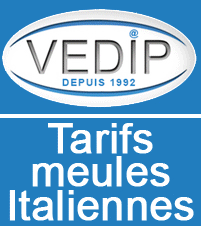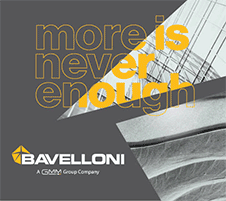
Flat glass newsletter. Summer 2016
Glasstec 2016
Glasstec 2016 will trakes place in Dusseldorf from 20 to 23 September 2016. It is the most important show for flat glass market, with more than 1200 exhibitors coming from more than 50 different countries.
To come to Glasstec is the opportunity to be informed about the last manufacturing technologies, the flat glass processing, tolls and machines, the last technologies for solar glass, architectural glass, measurement and control technologies.
More over a lot of technical conferences are organized
Lardet mirrors. Chassieu (Lyon)
Michel Morin today thinks of the mirrors of tomorrow
The mirrors still has a bright future. Michel Morin effort to ensure the health of its business in a changing business.
Michel Morin, you control the mirrors Lardet, closely related to the mirrors Favetto.
The mirrors Lardet was created in 1974 and I bought in 2003. I work in conjunction with mirrors Favettto and both companies have historical ties. Moreover, we have combined forces to purchase a building of 1 250 m 2 before investing in new machinery and share our skills to remain competitive in an era that sees, in turn, the Miroiteries disappear . We are in contact with other mirror makers in the region and exchanges allow us to reflect on the evolution of our business and to better negotiate with suppliers.
Explain the work of a glazier.
The tasks are very diverse. In addition, glass processing techniques have changed dramatically in recent decades. The glazier has the skills to shape a glass or a mirror, to the same a damaged part, although this complex task requires hours of work. It's sort of the glass artist in all its forms.
Today, we find the glass in new applications ...
As we were convinced, glass has experienced strong growth in applications for the interior, such as stairs, floor tiles, shower screens or kitchen splashbacks.
What ambition for the future?
The aim would be to work together to better meet the demands and heavy fund buying equipment investments.
A method for hardening glass surfaces award in Geneva
No more broken smartphone screens or scratched watch glasses. The 44th Exhibition of Inventions of Geneva awarded its Grand Prize to an exhibitor from Hong Kong Baptist University for a new curing process glass surfaces.
(Ats) The method involves applying high temperature sapphire film, one of the toughest materials in the world of glass or quartz, said Friday night the show organizers. This very thin layer is sufficient to ensure protection almost equal to that of a block of iron ore.
Transparency is not impaired. The optical transmission of the film is indeed very close to that of glass, between 89 and 92%. The method should interest many areas. It could be applied to all surfaces in flat or curved glass.
Professor Cheah Kok Wai, who won this year's Grand Prix, the rest working in the company Cathay Photonics, a company active in the optics.
The International Exhibition was also rewarded 45 other inventions among the thousands of new products presented.
The Miroiterie Landaise avoids liquidation, continuation plan approved
A long series that ends positively.
The Commercial Court of Mont de Marsan has validated Friday, March 25 the continuation plan presented by the patron of the Landes Mirrors.
A dozen mainly Landes investors commit to provide € 400,000 of new money to revive the company. The 117 employees are relieved.
117 employees of the Landes Mirrors retain their workstation.
Fenzi invests in digital processing machines
The Fenzi Partecipazioni holding company has decided to invest in digital glass processing technologies by buying into the capital of Tecglass, the Spanish producer of very high-tech digital glass printing machinery and components. This strengthens the working partnership of the two leading companies, which have already been working together for some time, and demonstrates the interest of Fenzi in innovations applied to glass while significantly increasing the growth potential of Tecglass on the international marketplace.
Established in 2002 by a group of experts who had a good deal of experience and know-how in this industrial sector, Tecglass has recently studied, developed and produced a range of digital printing machinery specifically for the glass industry. The technology takes the place of traditional decorating methods and offers a simple, efficient tool for applying graphic motifs and photographs directly on glass: ceramic inks can be used on glass for indoor or outdoor use, on sheets of any size (from a minimum of 380×380 mm. to a maximum of 3,300×18,000 mm), with a solution for any type of sector and application.
The sophisticated Tecglass technology fits in perfectly with Fenzi’s strategic vision and natural propensity for innovation which, a company whose financial strength, managerial skills and international sales network, can make the most of the considerable opportunities offered by what is a currently very promising market.
Companies and experts having an interest in this particular glass processing method will now have a new mix of services and products that meet the needs of designers, architects and developers both in terms of aesthetic results and manufacturing capability: Tecglass digital technology is now closer to glass processing companies worldwide and can count on the professionalism and solidity that have set the Fenzi Group apart for more than 75 years.
Reboot float Salaise sur Sanne. France
After 110 days of work, the furnace of the plant Eurofloat Salaise-sur-Sanne (Isère) was inaugurated today by Saint-Gobain Flat Glass and Riou.
€ 26 million were invested for its complete renovation and modernization of the float line which manufactures flat glass for residential and commercial buildings. Prepared for almost two years, this operation was carried out in record time between stopping the output end of January and the first glass poured on 20 May.
Emmanuel ABT, CEO of Eurofloat
This renovation allows to significantly improve technical and environmental performance of the float line with productivity increases of about 10%, from 580 to 650 tons of glass produced per day.
His new oven benefits from advanced technologies to reduce energy consumption by nearly 25% over the old facility and, therefore, CO2 emissions in the atmosphere.
Restarting the float line ensures the sustainability of the French industrial site, the life of the new furnace is 20 years. It is also a guarantee for all local and regional subcontractors, mostly SMEs, working for Eurofloat.
From left to right: Nicolas Riou, CEO of Glass Riou, Pierre Riou, president and founder of Riou Glass Group, Patrick Dupin, director pole Glazing Saint-Gobain and Jerome Lionet, director of Glass Industry.
Joint production company equally owned by Saint-Gobain and Riou Flat Glass subsidiary of Riou Glass Group, Eurofloat produces 22 million square meters of flat glass per year on its float line, 10 million of which are then transformed into glass thin film on the magnetron line and 6 million in laminated glass on its assembly line. Production of the plant supplies the French market and the Benelux.
"This major investment confirms the support that Saint-Gobain wants to bring to the glazing and building market in France. We managed to build with our employees and local communities,modern production facilities, and sober economic energy, consistent with our strategy of sustainable housing, "says Patrick Dupin, director of Saint-Gobain glass pole.
"I am very pleased today to inaugurate this new oven and stand as such to warmly thank the entire team of Eurofloat and subcontractors who worked for his production launched as quickly. Eurofloat is a very French tech industry. A flagship demonstrates the European and world market our know-how of glass products with high added values. Modernizing Eurofloat we invest for the future and the preservation of our jobs in the region, "says Pierre Riou, president and founder of Riou










